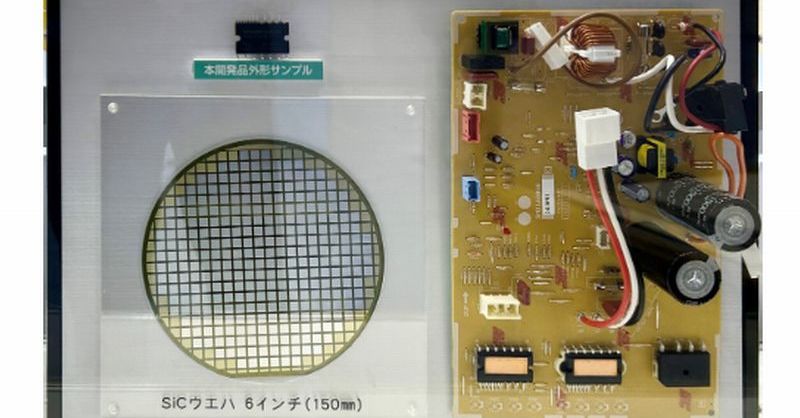Air Conditioner Efficiency Boost: SiC IPM Innovation Revolutionizes Cooling
The quest for energy-efficient cooling solutions is heating up, and a groundbreaking innovation is poised to significantly impact the air conditioning industry: Silicon Carbide Integrated Power Modules (SiC IPMs). This technology promises a dramatic increase in AC efficiency, leading to lower energy bills, a smaller carbon footprint, and a more sustainable future. Let's delve into the specifics of this exciting development and explore its potential to transform the way we cool our homes and businesses.
What are SiC IPMs and How Do They Work?
Traditional air conditioners rely on Insulated Gate Bipolar Transistors (IGBTs) to control the compressor's power. However, IGBTs suffer from significant energy losses due to switching and conduction. SiC IPMs, on the other hand, utilize silicon carbide semiconductors, which boast superior properties compared to IGBTs.
- Lower Switching Losses: SiC devices switch much faster than IGBTs, minimizing energy wasted during the switching process.
- Higher Operating Temperatures: SiC can handle higher temperatures, improving system reliability and efficiency.
- Reduced Conduction Losses: SiC offers lower resistance, leading to less energy loss during conduction.
- Smaller Size and Weight: SiC IPMs are typically smaller and lighter than IGBT-based modules, simplifying design and manufacturing.
These advantages translate to a significant increase in overall air conditioner efficiency. This means less electricity consumed to achieve the same cooling capacity, resulting in substantial cost savings for consumers and a reduced environmental impact.
The Environmental Impact of SiC IPM Technology
The increasing demand for air conditioning, especially in rapidly developing economies, contributes significantly to greenhouse gas emissions. The adoption of SiC IPM technology presents a compelling solution to mitigate this problem. By reducing energy consumption, SiC IPMs contribute to:
- Lower Carbon Footprint: Less electricity usage translates directly to lower carbon emissions from power generation.
- Reduced Reliance on Fossil Fuels: Increased energy efficiency reduces the need for fossil fuel-based electricity production.
- Sustainable Cooling Solutions: SiC IPM technology contributes to a more sustainable and environmentally responsible approach to cooling.
Benefits Beyond Efficiency: Reliability and Cost Savings
Beyond the environmental benefits, SiC IPMs offer several other advantages:
- Improved Reliability: The higher operating temperature and lower switching losses contribute to increased system reliability and longevity.
- Reduced Maintenance: Lower operating temperatures and improved reliability translate to less frequent maintenance requirements.
- Long-Term Cost Savings: The initial investment in SiC IPM-based AC units can be offset by significant energy savings over the system's lifespan.
The Future of Cooling: SiC IPMs and Beyond
The integration of SiC IPMs represents a major leap forward in air conditioning technology. While still relatively new to widespread adoption, the technology's potential is undeniable. Ongoing research and development are focused on further improving the efficiency and cost-effectiveness of SiC IPMs, paving the way for even more sustainable and energy-efficient cooling solutions in the future. We can anticipate seeing increased integration of this technology across various cooling applications, from residential AC units to large-scale industrial refrigeration systems.
Conclusion: A Cooler, Greener Future
SiC IPM innovation signifies a crucial step towards a more sustainable and efficient cooling industry. By offering significant improvements in energy efficiency, reliability, and cost-effectiveness, this technology promises a cooler, greener future for us all. The ongoing advancements in this field are something to watch closely as they promise to reshape the landscape of cooling technology for years to come. Stay informed about the latest developments in green technology and explore how you can contribute to a more sustainable future.
